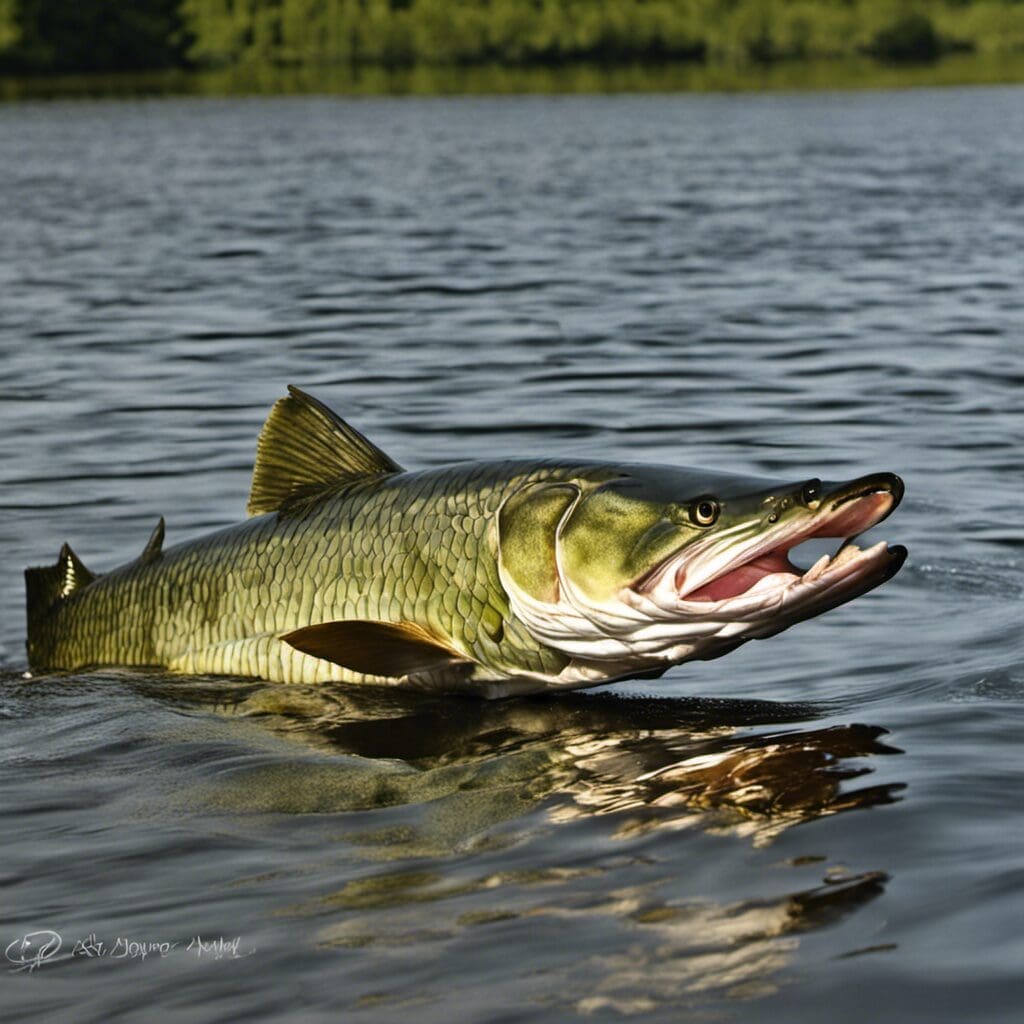Introduction
The Muskellunge, widely known as “Musky” or “Muskie”, is the largest species in the pike family, Esocidae.
Conservation Status
According to the International Union for Conservation of Nature (IUCN), the Muskellunge is not currently considered vulnerable or endangered and they have described the conservation status as ‘Least Concern’. Conservation efforts include controlled fishing seasons and catch limits in many areas, as well as habitat preservation and re-stocking programs in some regions.
Statistics
Here’s a glimpse at the Muskellunge’s basic statistics:
| Average Length | 24-48 in |
|---|---|
| Length Range | 17-72 in |
| Average Weight | 15-36 lb |
| Weight Range | 3-70 lb |
| Average Lifespan | 15-20 years |
Distribution
Muskellunge are found predominantly in North America, specifically in parts of Canada and the north-central United States. These fish show little to no migratory patterns due to being a freshwater species.
Habitats
Muskellunge thrive in freshwater. They prefer clear waters with a plentiful supply of vegetation and are found primarily at depths of less than 3 meters. Water temperatures between 67-72° F (19-22° C) work best for Muskellunge.
When and Where to See
Broadly, the late spring and early summer seasons are prime times to spot Muskellunge since they are most active during this time of the year. They are more prevalent in the daytime, especially in the early morning and late evening.
Best Fishing Locations
Muskies can be found in abundant numbers in the following locations:
1. Lake St. Clair, Michigan2. Vilas County, Wisconsin3. Lake Vermillion, Minnesota4. Leech Lake, Minnesota5. Eagle Lake, Ontario6. Lake of the Woods, Ontario/Minnesota7. Lac Seul, Ontario8. French River, Ontario9. Cave Run Lake, Kentucky10. Ottawa River, Ontario/Quebec
General Tips: Muskellunge tend to lurk near weed edges, rocky points, and other structures. Therefore, finding such locations in bodies of freshwater increases the chances of catching one.
How to Catch
Effective baits and lures include bucktail jigs, spinnerbaits, and large plastic worms. Muskies can be caught using numerous techniques, including casting, trolling, and even fly fishing. Fishing in the early morning or late evening during peak seasons yields the maximum success.
Identification Guide
Muskellunge have a distinct elongated body and flat head. They vary in color from light green to brown, and have vertical stripes on their flanks. Compared to similar species like Northern Pike, Muskellunge have more pointed heads and fewer, but larger, sensory pores on the underside of their jaws.
Culinary Guide
Muskellunge is known for its firm, white flesh and mild taste. It is typically cooked using methods that include grilling, frying, or baking. While its nutritional information varies depending on cooking methods, it is generally rich in protein and low in fat. One popular recipe includes blackened Musky with-cajun seasonings.
Additional Information
Muskellunge have solitary, ambush-style feeding habits and primarily feed on fish but can also prey onto waterfowl and rodents. Their mating rituals entail the male following the female who releases eggs for the male to fertilize. Major threats include habitat loss and overfishing. Musky are renowned in North American sport fishing lore due to their size and fighting spirit.
References and Further Reading
1. National Marine Fisheries Service
2. Wisconsin Department of Natural Resources
3. Michigan Department of Natural Resources
4. Pike and Musky fishing Association
5. Association of Fish & Wildlife Agencies
Please note that while this information intends to be as accurate and current as possible, evolving research and conservation actions may slightly alter these data. Always make sure to consult with local authorities and experts for the most updated and region-specific advice

